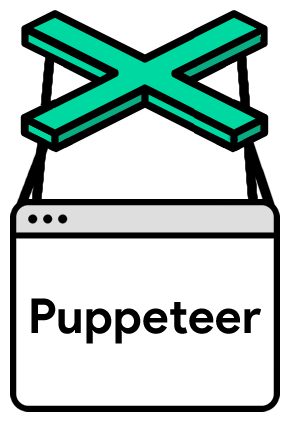Package Exports
- puppeteer
- puppeteer/internal/getConfiguration.d.ts
- puppeteer/internal/getConfiguration.d.ts.map
- puppeteer/internal/getConfiguration.js
- puppeteer/internal/getConfiguration.js.map
- puppeteer/internal/node/cli.d.ts
- puppeteer/internal/node/cli.d.ts.map
- puppeteer/internal/node/cli.js
- puppeteer/internal/node/cli.js.map
- puppeteer/internal/node/install.d.ts
- puppeteer/internal/node/install.d.ts.map
- puppeteer/internal/node/install.js
- puppeteer/internal/node/install.js.map
- puppeteer/internal/puppeteer.d.ts
- puppeteer/internal/puppeteer.d.ts.map
- puppeteer/internal/puppeteer.js
- puppeteer/internal/puppeteer.js.map
Readme
Puppeteer

Docs | API | FAQ | Contributing | Troubleshooting
Puppeteer is a Node.js library which provides a high-level API to control Chrome/Chromium over the DevTools Protocol. Puppeteer runs in headless mode by default, but can be configured to run in full ("headful") Chrome/Chromium.
Example
import puppeteer from 'puppeteer';
(async () => {
// Launch the browser and open a new blank page
const browser = await puppeteer.launch();
const page = await browser.newPage();
// Navigate the page to a URL
await page.goto('https://developer.chrome.com/');
// Set screen size
await page.setViewport({width: 1080, height: 1024});
// Type into search box
await page.type('.devsite-search-field', 'automate beyond recorder');
// Wait and click on first result
const searchResultSelector = '.devsite-result-item-link';
await page.waitForSelector(searchResultSelector);
await page.click(searchResultSelector);
// Locate the full title with a unique string
const textSelector = await page.waitForSelector(
'text/Customize and automate'
);
const fullTitle = await textSelector?.evaluate(el => el.textContent);
// Print the full title
console.log('The title of this blog post is "%s".', fullTitle);
await browser.close();
})();Contributing
Check out our contributing guide to get an overview of Puppeteer development.
